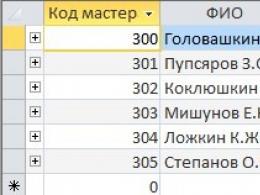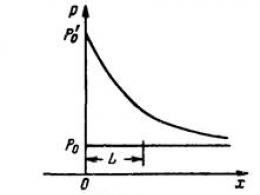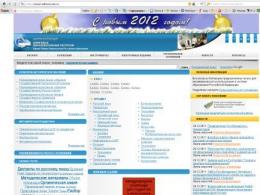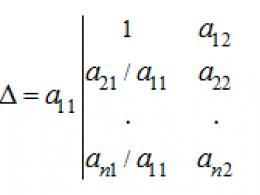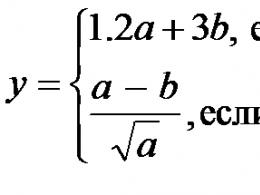geoinformation program. Free GIS software
Ministry of General and Vocational Education of the Russian Federation Krasnoyarsk State University Research Department of Biophysics Institute of Computational Modeling SB RAS Krasnoyarsk Interuniversity Center for Information Technologies in Environmental Education S.S. Zamai, O.E. Yakubailik SOFTWARE AND TECHNOLOGIES OF GEOINFORMATION SYSTEMS TUTORIAL Krasnoyarsk 1998 UDC BBK S.S. Zamai, O.E. Yakubailik. Software and technologies of geoinformation systems: Proc. allowance / Krasnoyar. state un-t. Krasnoyarsk, 1998. 110 p. The textbook is devoted to software and technologies of geoinformation systems (GIS). The areas of application of GIS, the issues of their practical use for solving various applied problems are considered. The review of spatial information input and processing technologies outlines the general principles and requirements for GIS software datasets, and analyzes common spatial data exchange formats. An assessment of the GIS of the end user, software development tools is given. Using the GeoConstructor™ class library as an example, the main problems that arise when creating GIS applications are outlined. Methods for constructing multiuser geoinformation systems are considered. The textbook was prepared as part of the work under the FTP project "Integration" No. 162 and was tested in classes with students as part of the activities of the Interuniversity GIS Center, supported by the FTP project "Integration" No. 68. 21, tab. 1, bibl. 20 titles Reviewers: Doctor of Physical and Mathematical Sciences, Professor A.N. Gorban, chief lab. Institute of Computational Modeling SB RAS; Candidate of Physical and Mathematical Sciences, Professor G.M. Rudakova, head Department of Information Technology of SibGTU Editor O.F. Alexandrova Proofreader T.E. Bystrigina © S.S. Zamai, 1998 ISBN O.E. Yakubailik, 1998 2 Contents FOREWORD 6 1. FIRST ACQUAINTANCE WITH GIS 8 1.1. What is a GIS? 8 1.2. Application areas of GIS 10 Local administrations 10 Utilities 10 Environmental protection 11 Health care 12 Transport 13 Retail trade 13 Financial services 14 1.3. How it's done... 14 1.4. GIS software trends 16 1.5. What is what 17 1.6. And how is it arranged? 18 2. SOURCES OF INITIAL DATA AND THEIR TYPES 19 2.1. General geographical maps 20 2.2. Maps of nature 21 2.3. Population maps 23 2.4. Economy maps 24 2.5. Maps of science, training, public services 26 2. 6. Political, administrative and historical maps, comprehensive atlases 27 2.7. Remote sensing materials 28 3 3. TECHNOLOGIES FOR INPUT AND PROCESSING OF SPATIAL INFORMATION 29 3.1. Data collection and systematization 29 3.2. Data preparation and transformation 31 3.3. Processing and analysis of data in the operation of GIS 35 3.4. Description of GIS exchange formats 38 VEC (GIS IDRISI) 38 MOSS (Map Overlay and Statistic System) 38 GEN (ARC/INFO GENERATE FORMAT - GIS ARCI/NFO) 40 MIF (MapInfo Interchange Format - GIS MAPINFO) 41 4. SOLVING PROBLEMS IN GIS END USER 45 4.1. Classification of GIS software 45 4.2. Evaluation of GIS tools 47 Support for spatial data models 47 Spatial analysis functions 48 Spatial information input/output tools 51 Format conversion tools 51 5. GIS APPLICATION DEVELOPMENT TOOLS: GEOCONSTRUCTOR™ 52 5.1. GeoConstructor™ as a tool for creating GIS applications 53 5.2. Embedding GeoConstructor in the Development Environment 54 5.3. Creation of cartographic compositions 57 5.4. Managing the set of layers and the map image 59 5.5. Working with objects: navigation, search, selection 62 5.6. Linking external databases 65 5.7. Thematic mapping 66 5.8. Error Handling and Mouse Control 67 4 5.9. Class gisMap 69 6. REVIEW OF SOME GIS 70 6.1. ESRI Software Products 70 ARC/INFO System Expansion Modules 74 6.2. GeoGraph/GeoDraw for Windows 78 GeoGraph for Windows 78 GeoDraw for Windows 81 6.3. Panorama software 83 Purpose of the program 83 Software structure 85 Software features 86 Vector map 88 7. METHODS OF BUILDING MULTI-USER GEOINFORMATION SYSTEMS 92 7.1. Local GIS 95 7.2. Several users share one set of geoinformation files 96 7.3. Geoinformation systems with a large number of users 97 7.4. Internet/intranet technologies 99 CONCLUSION 105 CONTROL QUESTIONS 107 REFERENCES 108 5 Preface This tutorial provides an overview of software and geographic information systems (GIS) technologies. The areas of application of GIS, the issues of their practical use for solving various applied problems are considered. The review of technologies for input and processing of spatial information presents the general principles, requirements for data sets used in GIS software. Particular attention is paid to the exchange formats of spatial data, detailed descriptions of which will allow this publication to be used as a reference. The section on end-user GIS discusses the main categories of this software and evaluates the tools. Methods for building GIS applications are considered in detail, using the example of the GeoConstructor™ tool library (developed by the Central Geographical Institute of the Institute of Geography of the Russian Academy of Sciences), as well as the issues of GIS integration with database systems. The technologies described in the manual are used by the authors in the project activities of student teams aimed at creating models of high-tech information systems for solving territorially oriented problems. The activity is organized within the framework of the Interuniversity Center for Information Technologies in Environmental Education, its results are used in the implementation of regional programs and informatization projects. The software was supplied with the assistance of the GIS Association of Russia by the companies TsGI IG RAS (GeoDraw/ GeoGraph), GeoSpectrum International (Panorama), Epsylon Technologies (Baikonur). The Interuniversity Center for Information Technology was founded by several universities in Krasnoyarsk: State University (KGU), Technical 6 University (KSTU), Technological University (SibSTU), Pedagogical University (KSPU). Its activities are financially supported by the Krasnoyarsk regional and city environmental funds, the grant of the Federal Target Program Integration No. 68. The Center is based at the Institute of Computational Modeling of the Siberian Branch of the Russian Academy of Sciences in Akademgorodok. The source materials for this manual were articles and abstracts of a number of conferences organized by the GIS Association of Russia, press releases and official materials from manufacturers and suppliers of GIS software, as well as a considerable number of journal articles and monographs. We express our sincere gratitude to all the authors of the mentioned materials. The authors can be contacted by e-mail - [email protected] 7 1. First acquaintance with GIS “Ten years ago, when everything was just beginning, it seemed: here we see maps on the monitor screen and can apply various designations, for example, the content of harmful substances. The result was a very clear and simple picture, and all the “spectators”, from state policy to municipal government, and even scientists, were thrilled with pleasure, looking at the contents of the screen. But everything has its limit, and now there has already been saturation with such things.” From the materials of the GIS-Association. 1.1. What is a GIS? The semantic and meaningful interpretation of the term geographic information systems, or GIS, strongly depends on the professional interests of the one giving the definition. If you listen to some, you might think that the only way to solve the problems of your organization, as well as the world's problems, is with the help of GIS. Of course, GIS is applicable to a very large number of applications in various subject areas, and with its help many tasks can be solved faster and more efficiently. But you should always remember that GIS is just a set of great tools that are used by specialists in different ways to solve them. Therefore, it is important to understand how to increase the efficiency of the organization with the help of GIS. It is very difficult to give a precise definition of GIS, because in practice it can be considered at several levels, and for different applications it will mean different things. For some GIS, a set of software tools used to enter, store, manipulate, analyze, and display geographic information (Fig. 1). This is an 8 technical definition that reflects the history of GIS development as a combination of design automation (CAD) tools with digital mapping and database programs (DBMS). For others, GIS can be a way of thinking, a way of making decisions in an organization where all information is related to space and stored centrally. It's more of a strategic definition. It is important to understand that a GIS may not be the solution to your problems and will require some thought to successfully complete the tasks. A GIS is a system consisting of three components, each of which is necessary for success: spatial data, hardware and software tools, and a problem as an object of solution. Moreover, the problem serves as the main component, forcing one to choose the methods of transmission. 1. Map of Krasnoyarsk in GeoGraph for Windows. Created in the GIS Technological Center, INM SB RAS 9, for storage of representation, data analysis, and software tools, and technologies for creating one or another subject-oriented information system. 1.2. Applications of GIS Local administrations The tasks of municipal management is one of the largest applications of GIS. In any area of local administration (land survey, land use management, replacement of existing paper records, resource management, property (real estate) and highway records), GIS is applicable. They can also be used at the command posts of the monitoring centers and in the first responders. GIS is an integral component (instrumental, technological, software) of any municipal or regional management information system. Utilities Utilities organizations most actively use GIS to build a database of fixed assets (pipelines, cables, pumps, distribution stations, etc.) that is a central part of their information technology strategy. Typically, this sector is dominated by GIS, which provides modeling of the behavior of networks in response to various deviations from the norm. The greatest application is found for automation systems for mapping and managing fixed assets to support "external planning" in an organization: cable laying, location of gate valves, maintenance panels, etc. (Fig. 2). ten
Classification of software GEOINFORMATION SOFTWARE Application modules Basic software tools Auxiliary tools (utilities) Functional features of GIS software tools are determined by their focus on the processing and analysis of attributive data. GEOINFORMATION SOFTWARE Programs for inputting information from traditional media Specialized GIS GIS for the development of Geoportals and Web servers Full-featured GIS Mapping programs Software for processing remote sensing data Software for processing GPS data CAD with GIS elements
Tver State University. Department of Cartography and Geoecology. Classification of software GEO INFORMATION SOFTWARE Commercial software products Open source software products OPEN (FREE) SOFTWARE means the user's right to freely run, copy, distribute, study, modify and improve it. Software is considered free software if users enjoy all four FREEDOMS: 1. FREEDOM to run the program for any purpose; 2. FREEDOM to study how the program works and adapt it to your needs; 3. FREEDOM to distribute copies; 4. FREEDOM to improve the program and publish your improvements.

Tver State University. Department of Cartography and Geoecology. Full-featured GIS Geographic Information System MapInfo Professional is a full-featured vector GIS - a professional tool for creating, editing and analyzing cartographic and spatial information. Working with data in formats with full preservation of design and geometry. Support for bitmaps in various formats. Connection of external databases and map servers. Data exchange with other software products. multimedia capabilities.

Tver State University. Department of Cartography and Geoecology. Full-featured GIS Geographic Information System ArcView GIS is a modular GIS, a set of powerful tools for mapping, reporting and cartographic analysis. Create maps using data display, data classification, symbology, labeling, layout, and printing tools. Map analysis through selection operations tools, analysis operations (buffer, cut, merge, intersection, union, spatial join) and visualization.

Tver State University. Department of Cartography and Geoecology. Full-featured GIS Geographic information system GIS GRASS is an open hybrid GIS with a modular structure that allows you to work with both raster and vector data. The advantage of the modular structure is more optimal memory handling. Georeferencing, 3D visualization and animation, raster math, data interpolation, network analysis, reclassification and other analytical functions.

Tver State University. Department of Cartography and Geoecology. Full-featured GIS An open desktop Quantum GIS module-type geoinformation system with direct access to GIS GRASS geodatabases and tools. Working with raster and vector data, georeferencing, vectorization, working with GPS data, spatial bookmarks, data export to MapServer, geocoding.

Tver State University. Department of Cartography and Geoecology. Full-featured GIS Professional GIS Map 2008 is a universal GIS that has tools for creating and editing maps, performing various measurements and calculations, overlay operations, building 3D models, processing raster data, and tools for working with geodatabases. Construction and analysis of networks, 3D analysis and modeling, processing of laser scanning data, updating maps using the Internet, building orthomosaics, geodetic calculations, GPS navigation.

Tver State University. Department of Cartography and Geoecology. Specialized GIS CREDO multifunctional complex has a modular structure, including: CREDO TOPOPLAN, CREDO GENERAL PLAN, CREDO LINEAR SURVEYS, CREDO ROADS, VOLUME, SITUATION PLAN, etc. Office work during the creation of geodetic support networks; office processing of engineering and geodetic surveys; processing of geodetic data during geophysical exploration; creation and correction of a digital terrain model for engineering purposes; export of data on a digital terrain model to CAD and GIS; processing of laboratory data of engineering-geological surveys.

Tver State University. Department of Cartography and Geoecology. GPS data processing software GPS TrackMaker is a program that allows you to exchange data between GPS receivers and a computer, as well as perform primary processing of this data. Working with various GPS models, creating, editing and deleting tracks, waypoints and routes. Insertion of graphic images, measurement of distances, movement speed, real-time navigation, cartometric functions, creation of a height profile by points. Working with various GPS models, creating, editing and deleting tracks, waypoints and routes. Insertion of graphic images, measurement of distances, movement speed, real-time navigation, cartometric functions, creation of a height profile by points.

Tver State University. Department of Cartography and Geoecology. CAD with GIS AutoCAD Map 3D is a leading technical GIS platform for creating and managing spatial data that integrates CAD and GIS and uses AutoCAD software features to support a wide range of mapping data. Access to raster, CAD, and GIS formats, GIS data editing tools, georeferencing, Web publishing capability via Autodesk MapGuide, GIS analysis (thematic mapping, buffering, network analysis).

Tver State University. Department of Cartography and Geoecology. Cartographic programs Cartographic system MapMaker is a program for cartographic drawing, editing and viewing electronic maps. Advanced digitizing and editing functions, preparation of raster and vector data for GIS, work with GPS and real-time navigation, 3D visualization functions, integration with Google Earth.

Tver State University. Department of Cartography and Geoecology. Programs for inputting information from traditional media Interactive intelligent vectorizer EASY TRACE is a software package for preparing cartographic data, a tool that allows you to quickly and efficiently create electronic maps based on their originals. Scanning, processing (preparation) and binding of rasters, automatic, semi-automatic (self-learning) and manual modes of vectorization, editing, stitching and verification of vector data, export of materials to GIS.

Tver State University. Department of Cartography and Geoecology. Software for remote sensing processing ENVI (Environment for Visualizing Images) software package is a professional solution for visualization, research, analysis and presentation of all types of remote sensing data. Support for a wide range of image formats (including radar), work with vector GIS data, display 2D and 3D images, 3D visualization, georeferencing and orthorectification, image mosaic, spectral analysis, work with stereo images.

Tver State University. Department of Cartography and Geoecology. Software for remote sensing data processing PHOTOMOD is a modular software package for digital photogrammetry, remote sensing data processing and GIS. Support for a wide range of image formats (including radar imaging and film materials), a module for constructing a DEM, creating and editing 3D vector objects in stereo mode, creating, editing and working with electronic maps, creating orthomosaics.

Tver State University. Department of Cartography and Geoecology. GIS for the development of Geoportals and Web-servers MapServer development environment for cartographic web-applications (mapping web-servers) with open source. Work on any platform, support for a large number of raster and vector data formats, the ability to reconfigure and program using PHP, Java, C and Python, integration with various DBMS, high-quality cartographic results.

ArcGIS is a family of software products of the American company ESRI, one of the leaders in the global market for geographic information systems. ArcGIS is built on COM, .NET, Java, XML, SOAP technologies. The latest release is ArcGIS 10.
Fig.3.1
ArcGIS allows you to visualize (represent in the form of a digital map) large amounts of geo-referenced statistical information. In the environment, maps of all scales are created and edited: from plans of land plots to a map of the world.
ArcGIS also has a wide range of tools for analyzing spatial information.
ArcGis is used in a wide variety of areas:
- Land cadastre, land management
- Accounting for real estate objects (see: AIS for registering real estate objects, ISOGD)
- · Engineering Communication
- Ministry of Internal Affairs and Ministry of Emergency Situations
- · Telecommunications
- · Oil and gas
- Ecology
- State Border Service
- · Transport
- · Forestry
- · Water resources
- Remote sensing
- Geology and subsoil use
- Geodesy, cartography, geography
- Business
- · Trade and services
- · Agriculture
- · Education
- Tourism
This software is used for all types of computers: desktop (ArcView, ArcEditor, ArcInfo), server (ArcGIS Server, ArcSDE) and pocket (ArcPad).
Intergraph GeoMedia
GeoMedia is a GIS technology from the GIS product family.
GeoMedia technology is a new generation GIS architecture that allows you to work directly without import / export simultaneously with a lot of spatial data in various formats. This is achieved by using special data access components - Intergraph GeoMedia Data Server.

Fig.3.2
Today, GeoMedia users have access to components for all major industrial formats of digital cartographic data storage: ArcInfo, ArcView, ASCII, AutoCAD, FRAMME, GeoMedia, GML, MapInfo, MGE, MicroStation, Oracle Spatial, etc., including raster, tabular and multimedia data . Users can then design their own GeoMedia Data Server based on a custom format template. Intergraph GeoMedia Data Server components allow to see and simultaneously analyze data from an arbitrary number of sources stored in different formats, coordinate systems with different accuracy on one map.
This approach allows you to save investments in existing GIS solutions, while at the same time moving to a new level of integration of enterprise information resources. The GeoMedia product family includes two core product lines, desktop and server, plus additional application modules.
GeoMedia is the prototype of the first version of the international GIS standards developed by the Open GIS Consortium and, at the same time, is the first implementation of these standards.
Intergraph GeoMedia is a software tool for obtaining, displaying and analyzing geographic data from various information systems. Used at remote client sites as a one-stop access to traditional GIS such as MGE and FRAMME.
GeoMedia is both a desktop system and a tool for developing your own custom applications. In addition, GeoMedia has built-in mapping tools that are not available in other existing GIS.
Main functions:
- · Full access to MGE, FRAMME (Intergraph), ESRI (ARC/Info), ESRI (ARC/View), MapInfo, Bentley/MicroStation and AutoCAD GIS project data.
- · Spatial analysis
- Full integration of geographic data from various GIS
- Customization for user requirements
- Coordinate transformations
- Display bitmap files, support various formats
- Building buffer zones
- · Construction of thematic maps, symbolization, placement of labels.
- · Work with Oracle SDO.
GIS software fall into five main classes in use. The first most functionally complete class of software is instrumental GIS. They can be designed for a wide variety of tasks: for organizing the input of information (both cartographic and attributive), its storage (including distributed, supporting network operation), processing complex information requests, solving spatial analytical problems (corridors, environments, network tasks, etc.), building derivative maps and diagrams (overlay operations) and, finally, to prepare for the output of original layouts of cartographic and schematic products to a hard drive. As a rule, instrumental GIS support both raster and vector images, have a built-in database for the digital base and attribute information, or support one of the most common databases for storing attribute information: Paradox, Access, Oracle, etc. The most developed products have run-time systems that allow optimizing the necessary functionality for a specific task and reduce the cost of replicating help systems created with their help. The second important class is the so-called GIS viewers, that is, software products that provide the use of databases created using instrumental GIS. As a rule, GIS viewers provide the user (if they provide at all) with extremely limited possibilities for updating databases. All GIS viewers include tools for querying databases that perform positioning and zooming of cartographic images. Naturally, viewers are always an integral part of medium and large projects, allowing you to save the cost of creating some jobs that are not endowed with the rights to replenish the database. The third class is reference cartographic systems (SCS). They combine storage and most possible types of visualization of spatially distributed information, contain query mechanisms for cartographic and attributive information, but at the same time significantly limit the user's ability to supplement the built-in databases. Their updating (updating) is cyclical and is usually carried out by the SCS supplier for an additional fee. The fourth class of software is spatial modeling tools. Their task is to model the spatial distribution of various parameters (relief, zones of environmental pollution, flooding areas during the construction of dams, and others). They rely on tools for working with matrix data and are equipped with advanced visualization tools. Typical is the availability of tools that allow you to perform a variety of calculations on spatial data (addition, multiplication, calculation of derivatives and other operations).
The fifth class, which is worth focusing on, is special means for processing and deciphering earth sounding data. This includes image processing packages, which, depending on the price, are equipped with various mathematical tools that allow operations to be performed on scanned or digitally recorded images of the earth's surface. This is a fairly wide range of operations, starting with all types of corrections (optical, geometric) through the georeferencing of images up to the processing of stereo pairs with the issuance of the result in the form of an updated topographic map. In addition to the mentioned classes, there are also various software tools that manipulate with spatial information. These are products such as tools for processing field geodetic observations (packages that provide interaction with GPS receivers, electronic tachometers, levels and other automated geodetic equipment), navigation tools and software for solving even narrower subject tasks (survey, ecology, hydrogeology, etc.). ). Naturally, other principles for classifying software are also possible: by scope, by cost, by support for a certain type (or types) of operating systems, by computing platforms (PCs, Unix workstations), etc. The rapid growth in the number of consumers of GIS technologies over by decentralizing the spending of budgetary funds and adding to them more and more new subject areas of their use. If until the mid-1990s the main growth of the market was associated only with large projects at the federal level, today the main potential is moving towards the mass market. This is a global trend: according to the research firm Daratech (USA), the global GIS market for personal computers is currently 121.5 times faster than the overall growth of the GIS solutions market. The mass nature of the market and the emerging competition lead to the fact that the consumer is offered an increasingly higher quality product for the same or lower price. Thus, for the leading suppliers of instrumental GIS, it has already become a rule to supply, along with the system, a digital cartographic basis of the region where the product is distributed. And the software classification itself has become a reality. Just two or three years ago, the functions of automated vectorization and reference systems could be implemented only with the help of advanced and expensive instrumental GIS (Arc/Info, Intergraph). A progressive trend towards system modularity to optimize project-specific costs. Today, even packages serving any technological stage, such as vectorizers, can be purchased both in full and in a reduced set of modules, symbol libraries, etc. The exit of a number of domestic developments to the "market" level. Products such as GeoDraw / GeoGraph, Sinteks / Tri, GeoCAD, EasyTrace not only have a significant number of users, but also have all the attributes of market design and support. In Russian, geoinformatics, there is a certain critical number of working installations - fifty. Once you have reached it, there are only two ways to go further: either to rise sharply, increasing the number of your users, or to leave the market due to the inability to provide the necessary support and development for your product. Interestingly, all of the programs mentioned cater to the lower price tier; in other words, they found the optimal ratio between the price and the pressure of functionality specifically for the Russian market.
gregory_k, from your comment it is not entirely clear what you are using. Or is it the opinion of an outside observer? Worked in Geopoisk about 4 years ago. Since I worked for a long time, I dare to comment on this software. 1. The license is really very cheap - 397 thousand, which is indicated on the off. site. For a million you can buy 3 pieces. 2. The low price is due to the fact that the team of creators is very small. The Tulchinsky brothers rule everything. As a result of such a small team for 7!!! Virtually NOTHING has changed in the program for years! Do you believe that if you need to change or add something in the program, then this will happen? Yes, and many people are not satisfied with the support at the moment, although I am sure that the Tulchins write not cunning scripts regularly and quickly. You have to give credit, well done. 3. The theoretical size of the database is impressive, BUT ask REAL users how they are doing. Most users try to split the bases by 50-100 wells. Otherwise, stability problems begin! If Geosearch users are viewing this thread, I hope they will comment on this fact. Maybe someone will give an example of a really working project with the number of wells, let's say more than 1000. It would be interesting. 4. The people are satisfied with everything they are used to. In one wonderful office, people work on DOS software for interpretation, in which the mouse is not even supported and claim that there is nothing better ... The question is habit and work efficiency. Someone has the task of doing 2 wells a day at random, and someone does 20 each with an analysis of the quality of the input and resulting data. 5. Once again - do not confuse multi-well calculation in the calculator and multi-well processing. The first in Geosearch is implemented cool, but the same can be done even directly in any database. But processing and analysis in multi-well mode is implemented very primitively. A simple question - how long does it take in Geopoisk to make a correlation from 5 wells with all curves, rigs, lithology, saturation, interlayers, and is it possible to quickly go over all this correlation and correct readings, lithologies, breakdowns, etc., looking at the neighbors? I think it's not even theoretically possible, or at least it's so difficult and time-consuming that no one does it))) PRIME is a fishery, for which it was originally created. There are interesting moments, but I recommend to work in it and do standard things - loading, visualization, calculations, unloading. Everything will fall into place. Just try. Regarding the Techlog and the pop-plastering, I’m ready to argue with examples. I compared the results of automatic breakdown made in Solver, Geopoisk and Techlog. The smallest adjustments are required to the results of the Techlog. And lastly. And why do we again stop only on the interpretation of standard logging? It is no secret to anyone that almost every field now has at least a few records of NMR, broadband acoustics, microscanners, and imported standard logging. What will you do with it in Geopoisk-Prime? But the price of conducting ONE study with the same microscanner is quite comparable to the cost of a good software license. Why are we still not thinking about the fact that a petrophysical model can be made based on all the data, and not just on the standard complex ... I'm not even talking about the Baker complex, Halov, slum or someone else ... There are already Russian almost similar devices. Maybe it's time to think about how to take a step further? So no, we are still standing on the statement that petrophysics is Excel. And you need to interpret everything for one well, as a result, in the geological model, you get a bunch of data that is inconsistent with each other ... Sorry, it boiled)))gregory_k writes:
And I would recommend to look geopoisk. For 1 million there licenses 3 or 4 can be bought. Their support is awesome. The interface there is really "an amateur", and the names of the menu items are simply ugly. But multi-well processing in geosearch is of high quality. It seems there is everything that you described in the requirements. About the limitation on the size of the base - the truth: 32000 curves per base. The open hole works for us in geosearch, people seem to be satisfied. I also want to say good things about Prime. Our authorities wanted to transfer fishermen to geo-search, so they raised such a howl that, probably, prime is a very good program. And I would not recommend Techlog, because. customers love layering. Techlog for it, like any foreign software, is poorly adapted.

